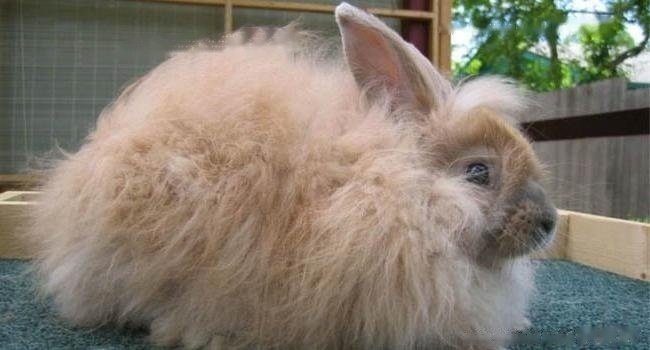Angora rabbit, produced in Angola, Turkey, is a typical long-haired rabbit breed, its obvious feature is its thick hair, people also call it grass mud rabbit. Its origin has caused a lot of controversy. Some people say that it originated in England and was cultivated by the French. Because of its slender and thick hair, people named it the angora rabbit. In the 18th century, the French royal family regarded it as a pet, and it has been popular in Europe ever since. Angora rabbits first appeared in the United States in the early 20th century. This rabbit is divided into five varieties, among which the British Angora Rabbit is the most popular. Followed by French Angola, German Angola, Satin Angola, Giant Angola and Gapten Angola.

1. The price of Angora rabbits
The price of Angora rabbits is about 100 to 300 yuan. If it is an ordinary (non-pure) Angora rabbit, its price is only A few hundred yuan, if it is a purebred variety, its price is very expensive, at least thousands. Most people can choose a few hundred yuan for pets. If they want high-quality pets, it is okay to spend a few thousand yuan on them. The key is to see how the breeder's mentality is!
2. Habits and characteristics of Angora rabbits
1. Food
As we all know, rabbitIt is a herbivore, it has 28 long-lasting teeth, but it also needs to eat a lot of food to further achieve the effect of grinding teeth, otherwise the teeth are too long and it is easy to get various diseases. The owner should not eat too many vegetables and fruits for Angora rabbits, let alone this as the main food. In the long run, it is easy to cause the problem of teeth occlusion, and if the stomach lacks crude fiber, it is not conducive to the digestion of the gastrointestinal tract. Most people think that rabbits prefer carrots. In fact, this is a wrong concept. At the same time, it is not recommended that rabbits eat a lot of vegetables and fruits. It is best to give it a certain amount of rabbit food, and also provide it with sufficient drinking water!
2. Drinking water
Whether it is dog, Cats or other animals need to drink water, and rabbits are no exception! Some pet store staff will tell parents not to give rabbits water, so the rabbits will not drip. This is not the case, rabbits, like other animals, must drink water, otherwise they will die! Parents think that vegetables contain a lot of water, and this water is enough to meet the needs of rabbits, so they should never drink water, it is not true. There should be these wrong ideas!
3. Living environment
Angora rabbits are considered to be medium in size, so the owner only needs to provide them with about two square meters of activity space. Commercially available rat cages, bird cages and cat cages can be purchased and used. Parents can create a warm and comfortable atmosphere for it. For example, a special toilet for rabbits can be placed in its cage. Some rabbits are born clean and do not need parental instructions. They can also defecate in the specified place, while others Rabbits need parental training in order to develop a good hygiene habit.
4. Breeding
Angora rabbits can reach sexual maturity about 8 months after birth. If the female rabbit is anxious, it means that it is about to enter estrus , During the estrus period, the male rabbit will scream and faint from time to time. When the female rabbit is successfully conceived, the owner should separate it from the male rabbit, lay some straw in the cage, and cover the cage with a dark cloth. , the owner had better not disturb it in the past, let it stay quietly. Parents should train the rabbit from an early age to make it develop a good excretion habit!
3. Diseases of Angora rabbits and prevention and treatment
1. Foot dermatitis
Parents should treat rabbit dermatitis in time. For mild dermatitis, apply a layer of dermatitis ointment on the affected area three times a day. In addition, a soft cloth should be placed in the cage of the sick rabbit, and the medicine should be continued for about a week. For severe rabbits, the affected area should be cleaned first, then disinfected, and then smeared on the affected area with Piyankang, and finally wrapped with gauze. Change the medicine every three days or so!
2. Mastitis
Parents should check the mother rabbit before it becomes pregnant, this is a very important link, and it should be taken in time Fruits, vegetables and alfalfa grass, which can properly reduce the possibility of mastitis, and the pup box must be scientifically made to avoid damage to the nipple of the female rabbit!
Guess you like it
Miniature Rabbit GliderGuinea Pig Guinea Pig CatRabbit
![[Dog Training 5] The training method of pet dog dining etiquette](/static/img/12192/12192_1.jpg)




